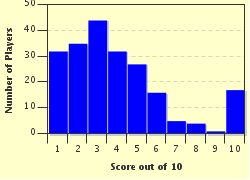Quiz Answer Key and Fun Facts
1. In 60s Britain, what was the significance of the colour sequence yellow, pink, green, blue?
2. What organisation lost a Stanley in the 60s, but gained a Town many years later?
3. Who had 'The window to watch?'
4. Potato Puffs were an early alternative to potato crisps, later made by Burton's until they finished production, but who were the original manufacturers, named as part of the title in the 60s?
5. Where could you find Pope, Dryden and Flaxman all together until 1967?
6. Which photographic chain supplied the royal family until 1967?
7. Which pack of sweets tried a short lived liquorice version in the 60s?
8. Many companies have made Walnut Whips, but who made the originals which were still on sale in the 60s?
9. Whose trademark was a sour lemon, most often seen on the front doors of grocer's shops?
10. Most 1960s enthusiasts would be only too familiar with Old English referring to Spangles, but can you remember the main colours of the packaging?
Source: Author
satguru
This quiz was reviewed by FunTrivia editor
bloomsby before going online.
Any errors found in FunTrivia content are routinely corrected through our feedback system.


